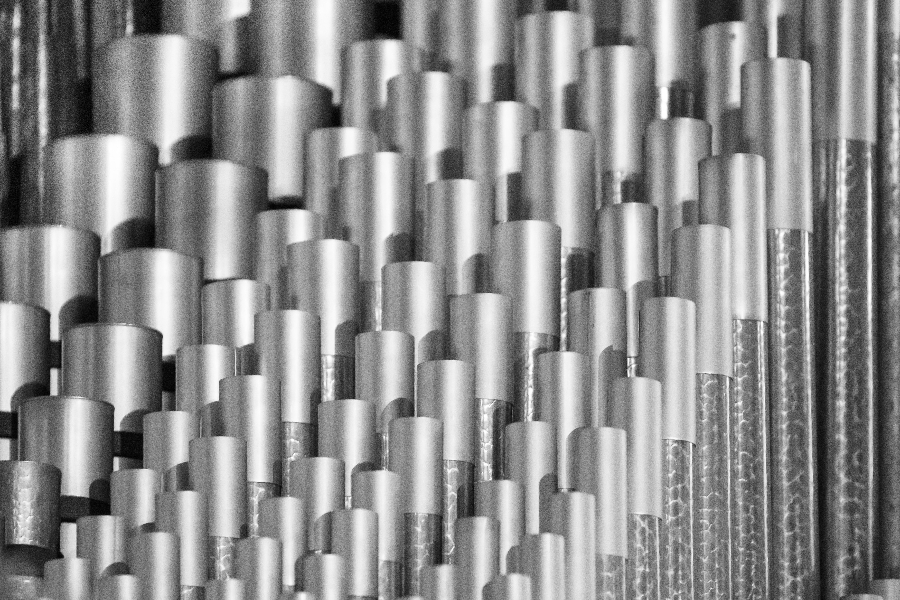When it comes to polished metal alloys, two of the most commonly used throughout the world are brass and stainless steel. Both of these alloys have played an integral role in the history of architecture, manufacturing, and more. And while these metals may seem entirely dissimilar on the surface, it’s not uncommon to face a difficult decision in evaluating brass vs. stainless steel for various projects.
At Polished Metals, our team of professional metal finishing experts routinely work with brass and stainless steel products of all kinds, including sheet metal, tubing, bars, channels, and more. We’ve seen firsthand the utility of both of these incredible metals, so today, we’re sharing more about how these metals compare and how to evaluate brass vs. stainless steel for your project.
Brass vs. Stainless Steel: Compositional Properties
To start off, let’s take a look at the composition of both metals. At its most essential, stainless steel is an alloy of iron, carbon, and chromium. While ordinary steel is solely iron and carbon, stainless steel is made “stainless” through the addition of chromium, which improves strength and enhances resistance to corrosion.
Various specific alloys of stainless steel exist, including 304, 316, and 430, and each of these contain different amounts of chromium along with additional metals such as nickel or molybdenum.
Brass, on the other hand, is made from copper and zinc, typically in a 2:1 ratio. Similar to stainless steel, specific types of brass may use different amounts of copper and zinc along with additional metals such as tin or lead.
Comparing Brass and Stainless Steel
When evaluating brass vs. stainless steel, it makes sense to break down both of these crucial metal alloys across a variety of dimensions and evaluate their properties and characteristics. Brass and stainless steel differ greatly in terms of their appearance, strength, conductivity, and more. Here’s how they stack up.
Strength
In terms of strength, stainless steel generally outperforms brass. While this depends on the specific alloy of each metal being compared, the most common types of stainless steel tend to be stronger than the most common types of brass. That said, brass is (perhaps surprisingly) quite strong, and in some applications can rival stainless steel.
Conductivity
When it comes to both thermal and electrical conductivity, brass is among the most conductive metals in the world, while stainless steel is significantly less so. Depending on the specific composition, brass may be as much as 15 times more conductive than stainless steel.
Corrosion Resistance
Brass is generally considered more corrosion resistant than stainless steel. However, much like with strength, these metals are often more comparable than one might think. Specific alloys of stainless steel may outperform brass in terms of corrosion resistance, which means it’s crucial to carefully evaluate each alloy individually.
Appearance
Perhaps one of the clearest distinctions between these metals is their aesthetic properties. Brass, as an alloy of copper, falls under the category of “red metals.” Traditional brass is yellowish-gold in color, while some alloys may be darker and closer to bronze. Stainless steel, on the other hand, is a rich silver color.
Neither appearance can be considered better than the other; in general, for projects where aesthetics matter, the decision between these metals comes down to preference.
Use Cases for Brass and Stainless Steel
If you’re planning a major project, you may be considering whether brass vs. stainless steel will be better. While these metals do have overlapping use cases, and ultimately the right choice depends on the specifics of your project (and the specific alloy in question), there are cases where the right metal may be more clear-cut.
For instance, stainless steel generally makes more sense in instances where structural strength is paramount. This may be the case for engineering and construction projects, as well as many architectural applications.
On the other hand, electrical, heating, and plumbing applications will nearly all favor brass. This is due simply to its superior conductivity and overall resistance to corrosion.
For design and ornamentation, however, the right choice depends entirely on the creative vision for the project. Both brass and stainless steel look gorgeous and are amenable to a wide variety of polished finishes, from high mirror shine to satin finishes.
Reach Out to Polished Metals to Discuss Your Project
Depending on the various structural, durability, and aesthetic considerations for your metal finishing project, either brass or stainless steel may be better suited to achieve your desired outcome. What’s more, with many varieties of both stainless steel and brass available, evaluating the differences between these metals can be tricky.
Here at Polished Metals, our team is renowned for our work with all forms of brass and stainless steel. No matter what the demands of your project are, our experienced craftsmen will be able to produce the right volume of high-quality finished metals to meet your needs, all within your timeline and budget.
Reach out to our team today to request a quote or to learn more about our finishing capabilities.

